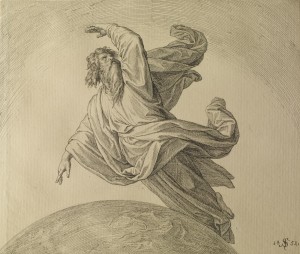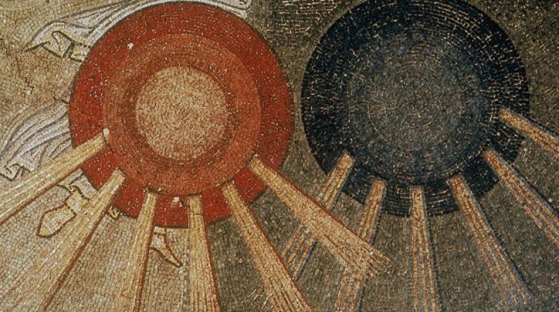

17th century illustration of the Vegetable Lamb of Tartary, known originally in Jewish folklore as a Faduah
Little record remains of this myth, which says that prior to his creation of Adam, God constructed a human-like creature known as Faduah or Adne Sadeh. While it resembled man, it was attached to the earth by its naval cord upon which its life depended. Therefore it was confined to the radius of the length of its cord which could grow as long as a mile, surviving by eating whatever grew or walked in its circle. While it could live a very long life, it would die immediately if its cord snapped. [1] Continue reading






 In the Second Book of Enoch (a.k.a. The Book of the Secrets of Enoch or Slavonic Enoch) God reveals to Enoch, the great-grandfather of Noah, the secrets of creation. At one point God explains to Enoch how he created the higher foundations of the cosmos using light from the belly an invisible being called Adoil and the lower foundations using the darkness that comes out of an invisible being called Arkhas – both of whom release their designated element under the command of God.
In the Second Book of Enoch (a.k.a. The Book of the Secrets of Enoch or Slavonic Enoch) God reveals to Enoch, the great-grandfather of Noah, the secrets of creation. At one point God explains to Enoch how he created the higher foundations of the cosmos using light from the belly an invisible being called Adoil and the lower foundations using the darkness that comes out of an invisible being called Arkhas – both of whom release their designated element under the command of God.